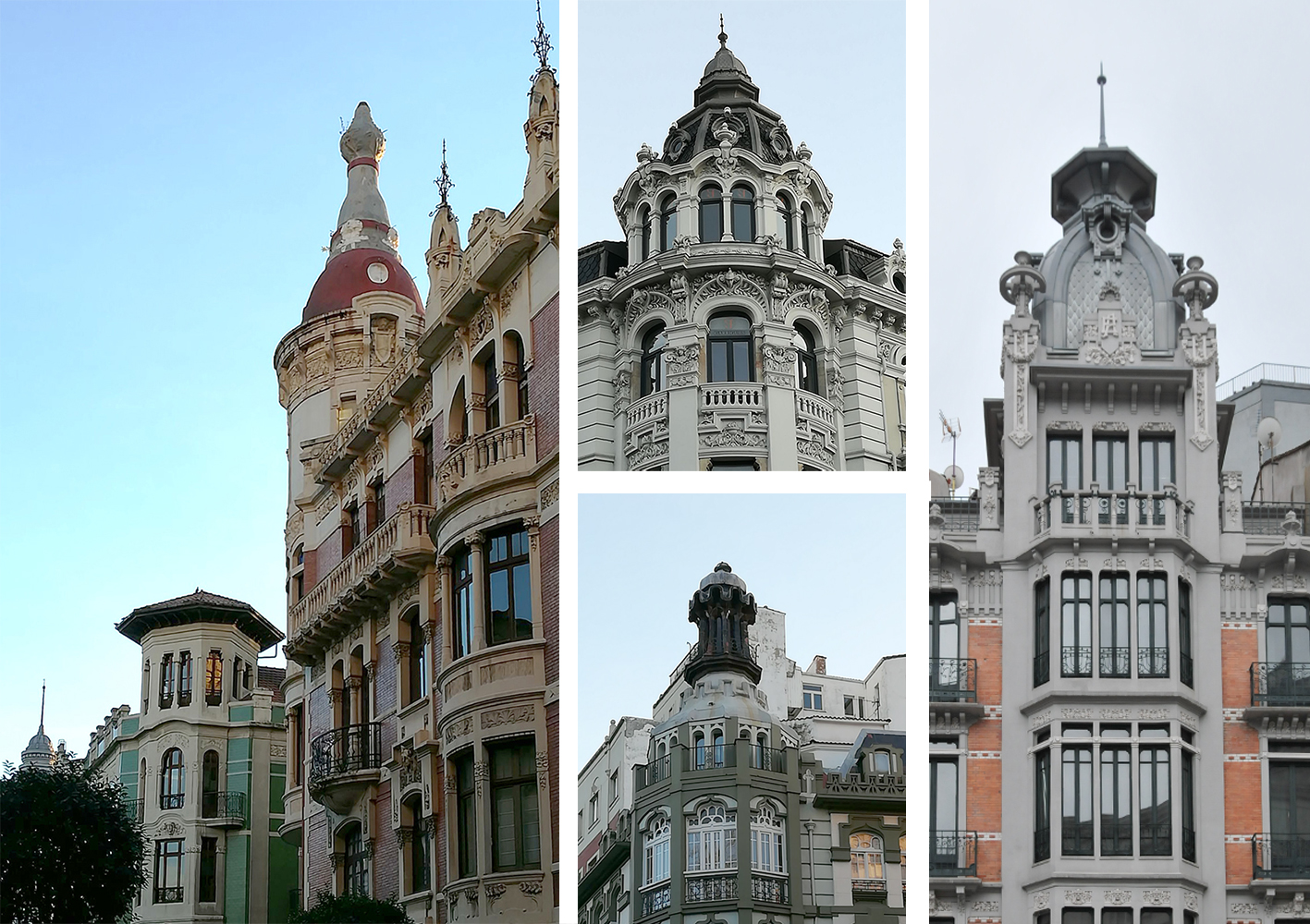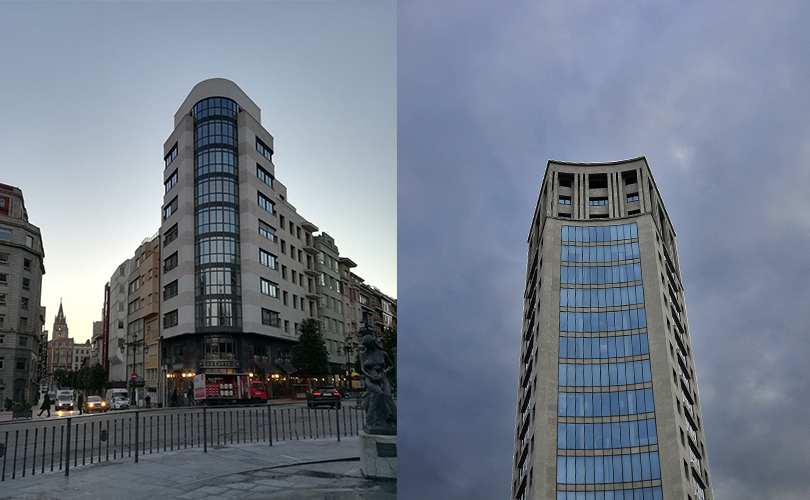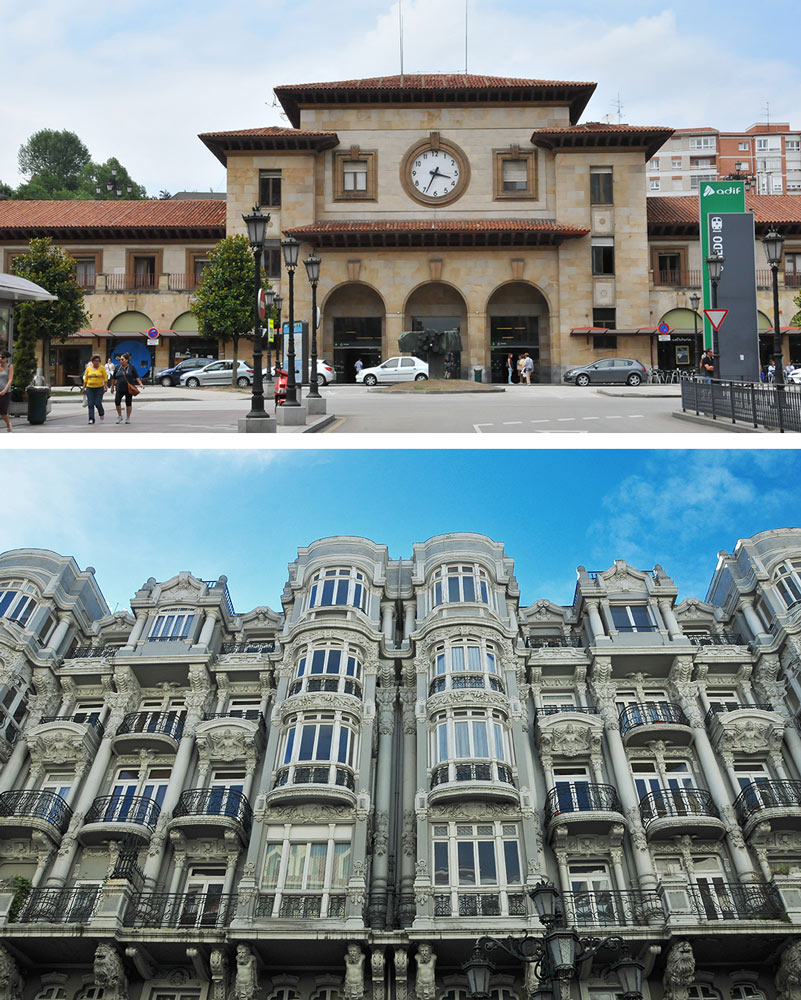Afternoon: Downtown and shopping
AFTERNOON: DOWNTOWN AND SHOPPING
Take Fontán Street or Fruela Street to exit the old quarter towards La Escandalera Square.
On the way, you will come to the building where the Principality of Asturias Parliament sits and, behind it, the headquarters of the Autonomous Government, in a building that used to be the Bank of Spain. The parliament building (1901), designed by Nicolás García de Rivero, was formerly the Provincial Council building and has been the seat of parliament since 1993. It occupies the site where the former Convent of San Francisco used to stand. Its demolition to create the new junction between Fruela and Uría streets was highly controversial. The interior, with historicist ornamentation, major stained glass windows, carpets and clocks and abundant quality paintings and murals, features a monumental staircase and can be visited on certain days in August and early December, on the occasion of the Constitution Day festivities. (www.jgpa.es)
This building is on the corner of La Escandalera Square, the central point of the city. This square is only a little over a century old, but it has had many official names, and there is an ongoing discussion about what citizen turmoil resulted in its current name of La Escandalera.
Look upwards: The domes
There are many buildings topped by domes in Oviedo, especially those from the early 1920s and those built on corners. Some of these domes are extremely beautiful. So don't forget to look up.

Lots of nicknames
Some of the buildings to which the inhabitants of Oviedo have given nicknames can be seen or found in or around La Escandalera Square. In many cases, these nicknames have become their official names.
At the point where Fruela Street crosses the square, we have “El termómetro” (The Thermometer - because of the curved glazed corner), which was completed in the 1940s although it had been designed earlier as an example of urban renewal. Opposite, on the edge of Campo San Francisco Park, a small building where the Municipal Office of Tourism is located, is known as “El Escorialin”, “baptised” by the people of Oviedo as soon as it was built, in reference to the great monastery of El Escorial.
And another example: behind the Campoamor Theatre stands the back of “La Jirafa” (The Giraffe), a popular name given to this property from the 1950s that sought to emulate the American taste for skyscrapers.

Between these two elements stands the façade of the Campoamor Theatre, the great lyric theatre of Asturias inaugurated in 1892 and that has been renovated on several occasions. The Campoamor hosts the Opera season, the second oldest in Spain, (www.operaoviedo.com) and the municipal Zarzuela (Light Opera) and Dance programmes, although the highlight of the year is always the presentation of the Princess of Asturias Awards (www.fpa.es), of great international importance, every October.
The theatre, named after the Asturian poet Ramón de Campoamor, is based on central European romantic classicism. It is a theatre in the Italian style, with a horseshoe plan. Key ornamental elements are the large Elizabethan chandelier hanging over the stalls, the ledges of the boxes, and the railings of the upper floors. It has 5 storeys and a total of 1491 seats. On the façade, the ground floor arches give way, on the second floor, to lintels that correspond to the cultural space known as the “Tea Room”.

Two major shopping streets start at La Escandalera and head away from the old quarter. On the left, Uría Street, the main thoroughfare, which was built at the same time as the train station, which is located at one end of the street and is known in Oviedo as “Estación del Norte” (North Station). On the right, after passing the Campoamor Theatre, we have Pelayo Street and then Palacio Valdés Street, both of which have been pedestrianised. This whole area is home to many commercial establishments, particularly dedicated to clothing, footwear, and accessories. There are department stores and chains similar to those found in any capital city today, dynamic and diligent local and traditional establishments, as well as franchises belonging to domestic and international brands. You have plenty to choose from.
As you walk along Uría Street, you will come to Milicias Nacionales Street on the right, where there is a sculpture of Woody Allen (Princess of Asturias Prize of the Arts in 2002), whose glasses are occasionally broken by vandals.
In Uría Street, there are several buildings of interest (Oviedo also has an Architectural Tour Guide). Two particularly come to mind: The “Casa Blanca” (White House), at number 13, by Manuel del Busto (1929), was the first high-rise building in this street and displays, both inside and out, the bourgeois approach of the 1920s; and, at the end of the street (numbers 27 and 29), we have the striking “Casas del Cuitu” by the master architect Ulpiano Muñoz. It is worth admiring its exacerbated baroque façade from the front.
Return to the city centre along Melquiades Álvarez, Palacio Valdés and Pelayo Streets. At the end of the first, you will come to the church of San Juan (1902-1909), which is a basilica known as “la catedral del ensanche”. It was designed by the diocesan architect Luis González Bellido and is a monumental building with two spires, domes, stained glass windows... and lavish interior decoration. It also has a striking night lighting arrangement.
